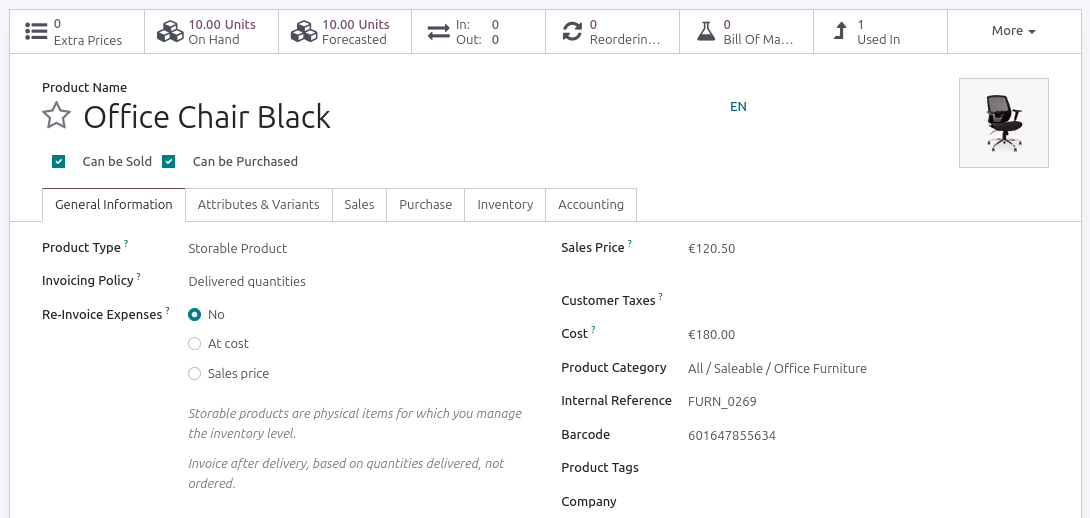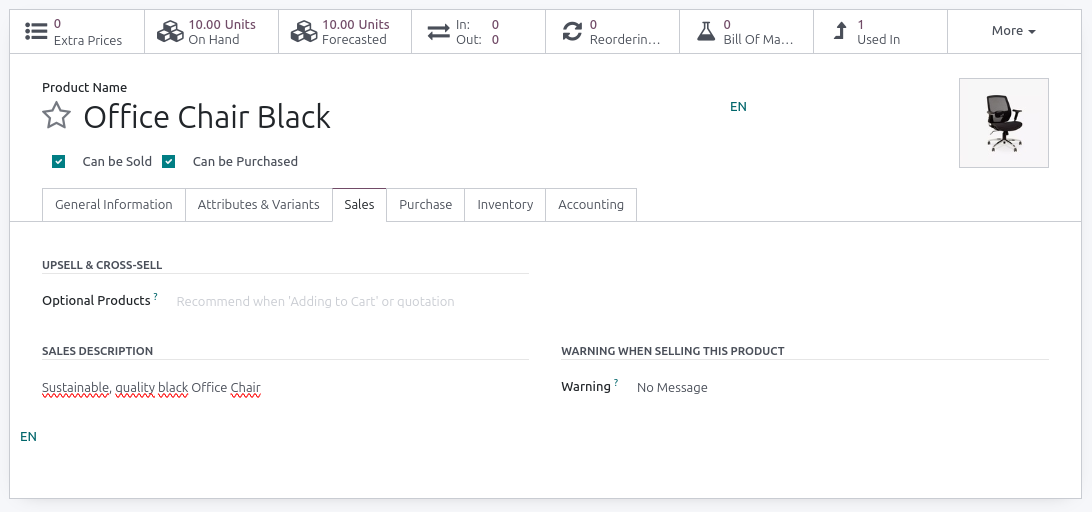Voraussichtlich wird dies ein recht kurzer Blog. Das Thema jedoch treffen wir sehr häufig an.
Hintergrund
Jeder kennt es, das Ding, das auf Belegen so selbstverständlich erfasst wird wie das Blaue am Himmel – die Positionsnummer.
Natürlich gibt es sie in unterschiedlichen Ausprägungen, etwa durch einfaches Hochzählen, aber auch in Form einer numerischen Gliederung. So trägt z.B. der Absatz die 1 und die Unterpunkte werden als 1.1, 1.2, 1.3 etc. bezeichnet.
Und dann kommt das Erstaunen: Druckt man einen Beleg in Odoo, egal welche Vorlage ausgewählt ist, findet man KEINE Durchnummerierung der Positionen!
Die kurze Antwort ist: Man nimmt einfach die Artikelnummer.
Damit zeigt Odoo, dass viele gewohnte Dinge im Zweifel gar nicht benötigt werden, wenn man bereit ist, neu zu denken (siehe auch das Fehlen der Trennung zwischen Vor- und Nachnamen).
Wenn Sie eine längere Begründung benötigen, bitte einfach weiterlesen.
Hat Odoo tatsächlich keine Positionsnummern?
Wer genau hinschaut, findet in Odoo einen technischen Hinweis auf das Vorhandensein einer Positionsnummer im Export. Öffnet man einen Export der Angebote, schaut in die Liste der Felder und klickt dort auf die Liste der Positionen (Deutsch: Auftragszeilen, Englisch: Order Lines), findet man:

Die Sequenz wird benötigt, um die Reihenfolge der Positionen zu verwalten. Wenn man diese exportiert, so wird Folgendes angezeigt:

Allerdings gibt es dort eine Einschränkung. Dieses Feld wird nicht allein zur Darstellung der Sortierung genutzt. Darüber hinaus hat jede Position eine eindeutige Datensatz-ID. Legt man eine neue Position an, so ist der Standardwert der Sequenz eine 10, die Datensatz-ID wird aufsteigend hochgezählt. Die Standardsortierung erfolgt nach Sequenz und Datensatznummerierung. Damit ist die Reihenfolge der Anlage der Positionen entscheidend.
Greift man nun manuell ein, so wie es vor dem Export oben geschehen ist, wird die Sequenz verändert, indem die einzelnen Zeilen durchlaufen werden und beginnend ab dem Wert 10 hochgezählt und die Sequenz gesetzt wird.
D.h., Odoo nutzt die Sequenz intern, um eine Sortierung anbieten zu können und um die Reihenfolge der Positionen in der Darstellung zu kennen.
Kann man dieses Verhalten nutzen?
Natürlich könnte man diese Mechanik für sich nutzen (vorausgesetzt man hat Programmierkenntnisse). Dabei wäre es notwendig, eine Abfrage in das Dokument zu integrieren, ob es eine manuelle Sortierung gibt oder nicht. Die zusätzliche Spalte für die Position würde dann im Falle einer manuellen Sortierung die Sequenz minus dem Wert 9 anzeigen, andernfalls sollte die Spalte die Datenbank-ID minus ihrem Anfangswert +1 anzeigen. In beiden Fällen würde von 1 aufwärts gezählt.
Beispiel 1 (Zugriff auf die Sequenz):
Nach der Sortierung beginnt Odoo ab 10 hochzuzählen. D.h., die erste Position hat die 10, die Zweite die 11, die Dritte die 12. Ziehen wir die 9 ab, erhalten wir 1,2,3, etc.
Beispiel 2 (Nutzung der Datenbank-ID):
Beginnt die Datenbank-ID der ersten Position z.B. mit dem Wert x, haben wir danach x+1, x+2. Demnach wäre die erste Positionsnummer wie folgt zu generieren x-x+1, die 2. x-x+2.
Aber mal ehrlich, lohnt sich der Aufwand wirklich? Immerhin bedeutet das eine Anpassung im System, die nicht mit dem Odoo Studio realisiert werden kann. Das wiederum bedeutet, dass ohne Entwickler oder Drittmodul aus dem App Store die Anforderung nicht lösbar ist.
Eine legitime Frage sollte sein, wieso fehlt eine so übliche Funktion? Odoo gibt es nun seit knapp über 20 Jahren, wieso hat der Hersteller die Integration einer solchen Funktion nie als notwendig erachtet?
Was ist die Auflösung?
Dass jemand etwas so Selbstverständliches über Jahre nicht implementiert, ist natürlich zwar ein Hinweis darauf, dass es womöglich nicht notwendig ist, aber noch keine Antwort:
Die Frage ist deshalb, wozu dienen Positionsnummern?
Übersichtlichkeit: Schlichtweg zu verstehen, was zusammengehört.
Eindeutige Identifikation: Jede Position erhält eine eindeutige Nummer, die es leicht macht, sich auf eine bestimmte Position zu beziehen. Dies vermeidet Missverständnisse und Fehler bei der Kommunikation.
Schnellere Suche und Referenz: Mit nummerierten Positionen können Sie schnell die gewünschten Informationen finden und auf die entsprechenden Posten in einem Angebot oder einer Rechnung verweisen.
Effiziente Kommunikation: In geschäftlichen Gesprächen und Verhandlungen ist es einfacher, sich auf eine Position durch ihre Nummer zu beziehen, was die Kommunikation zwischen Geschäftspartnern effizienter macht.
Gehen wir auf die einzelnen Punkte ein.
Für die bessere Übersicht und um zu verstehen, was zusammengehört, bietet Odoo die Generierung von Abschnitten an. Damit können Positionen zusammengefasst und betitelt werden. Darüber hinaus wird im Beleg eine Zwischensumme für jeden Abschnitt errechnet und angezeigt.
Anmerkung: Über Angebotsvorlagen können Verkäufern sogar Angebotsstrukturen vorgegeben werden.
Zu den Punkten 2-4 schauen wir uns an, wie Odoo eine Leistungsbeschreibung pro Position generiert. Entscheidend dafür sind drei Felder auf der Produktanlage.
Die ersten beiden finden wir direkt auf der ersten Seite in Form der „internen Referenz“ (Internal Reference) sowie des Produktnamens. In anderen Systemen werden sie als Kurzbezeichnung betitelt (Name).

Das 3. Feld ist im Reiter „Verkauf“ zu finden und ist die Verkaufsbeschreibung (Sales Description).

Aus diesen drei Feldern wird die Position automatisch generiert, was dann für das gezeigte Produkt so aussieht:

Dies bedeutet, der Positionstext wird automatisch aus der Artikelnummer (interne Referenz), dem Produktnamen und der Verkaufsbeschreibung gebildet.
Im Endeffekt kann man sagen, dass es in den Anforderungen 2-3 darum geht, dem externen Kontakt und dem Mitarbeiter eine Möglichkeit der Synchronisierung zu geben, so dass eine Identifikation der Zeile erfolgen kann, über die dann entsprechend eine Kommunikation stattfindet.
Im Detail geht es darum, dass der Kunde ein Papier oder ein PDF vor sich auf dem Bildschirm hat und nun eine Position nennt, zu dem er einen Austausch wünscht. Damit sein Ansprechpartner diese Zeile schneller findet, nennt er die Positionsnummer, um die es geht.
Im Falle von Odoo handelt es sich um die Artikelnummer, die zum Austausch genutzt werden kann. D.h., in der Mail oder im Telefonat lässt man sich die interne Referenz geben.
Und wie findet man diese dann am besten?
In diesem Fall nutzt man alle Hilfsmittel, die vorhanden sind. Hier ist es der Browser. Mit der Tastenkombination STRG+F öffnet sich die Suche des Browsers und man tippt einfach die genannte Artikelnummer ein. Damit springt man automatisch an die entsprechende Stelle.
Auf diese Weise ist eine Synchronisierung, Identifikation und Kommunikation zwischen beiden Parteien möglich und eine eindeutige Austauschebene geschaffen.
Vorteil
Diese Herangehensweise hat zwei weitere Vorteile gegenüber dem klassischen Ansatz der Positionsnummern:
1) Wer sich in der Listenansicht der Angebote oder Aufträge befindet, kann hier ebenfalls die Artikelnummer eingeben und direkt nach Vorgängen suchen, in denen der entsprechende Artikel vorkommt:

Eine Suche nach Positionsnummern wäre eher sinnlos.
2) Eindeutigkeit über die Belegkette
Ein weiterer Vorteil ist die Eindeutigkeit über die Belegkette hinweg, da sich der Positionstext fortsetzt und somit vom Auftrag zum Lieferschein und zur Rechnung gegeben wird.
Im Fall einer Teillieferung oder Teilabrechnung würde diese Eineindeutigkeit nicht gegeben sein, da sich das Verhältnis von Positionsnummer zum Artikel nur im Falle einer 1:1 Lieferung und Abrechnung ergeben würde.
Fazit
Odoo hat keine Positionsnummern und der Ansatz, die Artikelnummer hierfür zu verwenden, bietet deutlich mehr Vorteile als die gewohnte klassische Variante.
Allerdings muss man schon sagen, dass der Ansatz über Artikelnummern schnell sein Ende erreichen kann, wenn es um Bauverzeichnisse, Projektkalkulationen oder umfangreiche Leistungsübersichten geht. Doch in diesem Zusammenhang gibt es weitere Themen, Anforderungen und Lösungsoptionen, die zu einem späteren Zeitpunkt in einem separaten Artikel betrachtet werden.
War dieser Artikel hilfreich?
Dürften wir Sie bitten, uns eine Bewertung zu Ihren Erfahrungen mit openfellas zu hinterlassen?